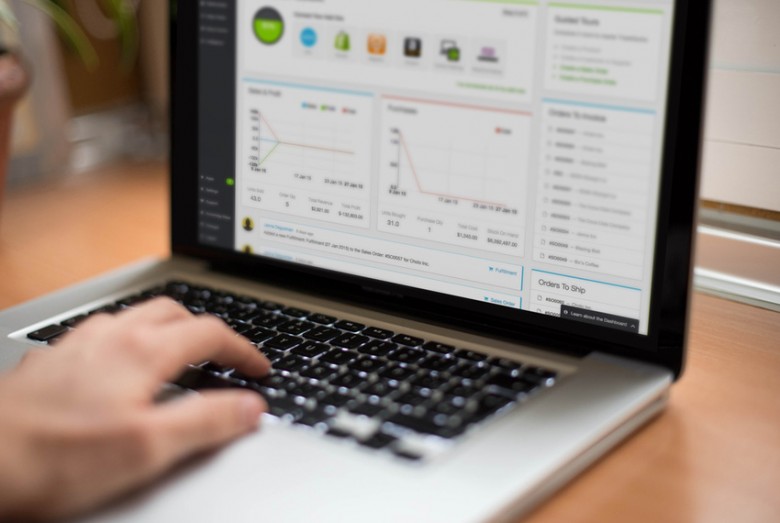The call to go digital has long been an imperative for businesses. Marketing teams are shifting their budgets from traditional channels to social and digital advertising, sales teams are using digital tools and apps to keep track of leads, and internal teams are using project management software to collaborate better.
But what about your HR department?
It seems that for many organizations, the HR department lags behind other corporate functions when it comes to innovations. The majority is still rooted in traditional processes (such as excel sheets or pen-and-paper logbooks). Is this true for yours?
Organizations tend to overlook the importance of technology for HR, preferring to invest more on profit-driving aspects of the business such as sales and marketing. But employees are the single most important resource for any business (not to mention that employee salary makes up more than 50% of total expenses for most businesses), and you need to invest in effective processes to attract, nurture, and retain them.
And if your employees are now living and breathing digital, then your HR department needs to be well-equipped, too.

1. RECRUITMENT HAS GONE ONLINE: FROM ONLINE CLASSIFIEDS TO SOCIAL MEDIA
Jobstreet and JobsDB have rendered newspaper job listings obsolete: Easy to set-up, cost-efficient, and can be tweaked in real-time, these online job sites also promise to give more targeted applicant results for employers.
Today, the real disruptor is LinkedIn. initially just thought of as ” a social network for professionals,” LinkedIn has been steadily boosting its capabilities to identify connections between users, skills, companies, and jobs–even before we think of them.
The content and ads you get on LinkedIn are all personalized, based on your interests.
The recruitment process has also changed. A great number of job offers happening on LinkedIn are “passive”–meaning, professionals who are generally satisfied with their jobs receive unexpected offers to explore new opportunities via a simple Linkedin InMail.
LinkedIn has then built its own products for HR professionals, such as the Recruiter tool, which allows users to make advanced searches on member profiles. The Recommendations feature is also great for reading feedback from past and present colleagues.
And it is not just LinkedIn. Facebook and Twitter are becoming huge references for employees, so they can better know their employees beyond what they put on their CVs.
In Jobvite’s 2014 Social Recruiting Survey (US-based, n=1,855), a whopping 93% of recruiters use social media to hunt for talent, so they can measure whether someone will be a good fit for the company’s culture. More than experiences and skills, social media can show a potential employees’ lifestyle and values.

2. EMPLOYEES ARE USING SOCIAL MEDIA TO RECORD LIFE AT THE WORKPLACE. IT CAN MAKE OR BREAK YOUR COMPANY’S IMAGE.
Social media has made brands and companies more transparent, if not vulnerable.
A few years ago, Comcast had quite the backlash, when one of its technicians was filmed sleeping on a customer’s couch. The video was uploaded by the homeowner and caused a PR nightmare for Comcast.
Or who could forget a viral video (over 19 million views) of a woman flamboyantly quitting her job and exposing how her boss “only cares about quantity and video views” despite their already-overworked culture.
The importance of having a digital-savvy HR department is not just to put out the fire when a crisis arises.
Potential employees do not only want to know the basics of your company, care of your website. They want to get a glimpse of your culture and what goes on behind the scenes. They check your social media accounts to see photos of your team building activities, what articles your employees are sharing, or even just a normal day in your office.
To attract top talent, HR should know how to work social media to their advantage. While some focus mostly on creating guidelines of what NOT to do on social, now, it is all about encouraging positive engagement from employees.
Your social media presence should not just be the domain of your marketing team, but a shared property of the whole organization—where your accounts team can share client interactions, where your creatives team can post photos of their brainstorming session, or where HR can award star employees. A healthy social media presence handled by all members of the team speaks louder than any advertisement and can help build a trustworthy employer brand.

3. ORGANIZATIONAL INTERACTION HAPPENS ON SOCIAL MEDIA AND MESSAGING APPS
It is a common sight in most workplaces: Co-workers are now using chat apps and social media to communicate with each other—even though they are literally seats apart.
This is not a sign of laziness. Teams now prefer to communicate on these channels because they make collaboration easier. They can share documents, images, and videos without opening their emails, and there is more sense of urgency. These apps also let them connect with members of their organization who are not always in front of their computers all day. Communication feels more natural and casual, and you can archive conversations for later.
Enterprise chat apps are now all the rage in Silicon Valley. These apps boast the simplicity of Viber, but equipped with productivity, collaboration, and organization features. Popular ones include Campfire (from the creators of Basecamp), Cotap, and Slack. Evernote has launched Work Chats, while Dropbox has acquired chat app Zulip. And the latest one, ubiquitous Facebook, has just announced that it is launching “Facebook at Work,” which will let businesses create their own social networks for their employees.
Mobile messaging apps and social media have democratized the workplace, in a way. You don’t have to be the resident expert to share new ideas or helpful resources, and you can let your voice heard across the organization—even to the CEO.
The opportunities for HR are many:
- They can use it for onboarding, making sure that new employees already get a glimpse of the company’s culture.
- They can tap it for knowledge-sharing, making sure everyone has access to their peers and their respective expertise.
- They can use it as a listening tool to gauge employee engagement.
But HR should not just allow their employees to run wild on these channels. They should make sure that everything shared on these platforms are constructive and worthwile. Another thing to consider is the generational gap within an organization. While millennials and Gen Y employees are easier to engage here, some Baby Boomers may not see the need for such tools, and may even feel alienated from the organization.
The important thing to impart to them is that these tools exist for the benefit of the organization.

4. CONNECTED TECHNOLOGY BRINGS AN ALWAYS-ON WORKFORCE
Before, employees can literally leave their work in their office. But with mobile devices getting more powerful and more connected, we can now bring our work anywhere, unhampered by traditional barriers of time, geography, and IT support.
The most widely-used ones are Google Drive and Dropbox for team file sharing, Asana, Basecamp, and Trello, for project management, and Skype and GoTo Meeting for vitual meetings.
This new way to work has more benefits than harm: We are more in control of our productivity, we are able to access office resources remotely, and we feel more in-control of our time.
But there is also a clear danger: How can your employees log out of work in an always-on world? How can your workforce lead healthy, balanced lives?
Instead of imposing strict restrictions when it comes to digital usage, HR’s first order of business is to align the organization—top-to-bottom, bottom-to-top—when it comes to the role of digital for each employee, as well as for the whole company. The focus needs to shift on the outcome of digital processes, not so much on the tools themselves.
At the same time, employees should also know what is to be expected from them given these digital tools, and that they exist not to make them carry their work everywhere, but to make their lives easier while being more productive. Employees need to be well-equipped on the why’s and how’s of digital technology, so they can use it to their advantage.

5. TECHNOLOGY WILL ADD THE HUMAN TOUCH BACK TO HR
Talking to a lot of people in HR today, it seems like majority of their time is spent in basic, administrative work: constantly managing personnel records, payroll processing, and other SSS or BIR errands.
Small to medium sized businesses usually have only one or two people in HR, and these tasks fill up their entire working time. This means that core HR functions such as employee engagement, training, performance reviews, and ensuring employee satisfaction, are often compromised.
There are already a lot of web-based and mobile apps that can help your HR staff to handle administrative tasks more efficiently. An example very close to home—PayrollHero has helped cut down payroll processing from days to mere minutes. Beyond tracking attendance and punctuality of your employees, it also has a self-service model for resolving attendance, generating payslips and bank payroll files, all the way to sending automated email warnings to employees who are consistently late.
These tools already exist, and businesses who want to edge out the competition need to consider investing in these. Sure, you will need to set aside some time to learn, but in the long run, you will save more time and money.
Digital tools and cloud-based technology will free up your HR’s time for basic tasks so they can focus more on the “human” side of their job. And since these tools are backed up by analytics, HR can easily share quantifiable insights to their CEOs/business owners so they can both be more proactive in improving the workforce.

